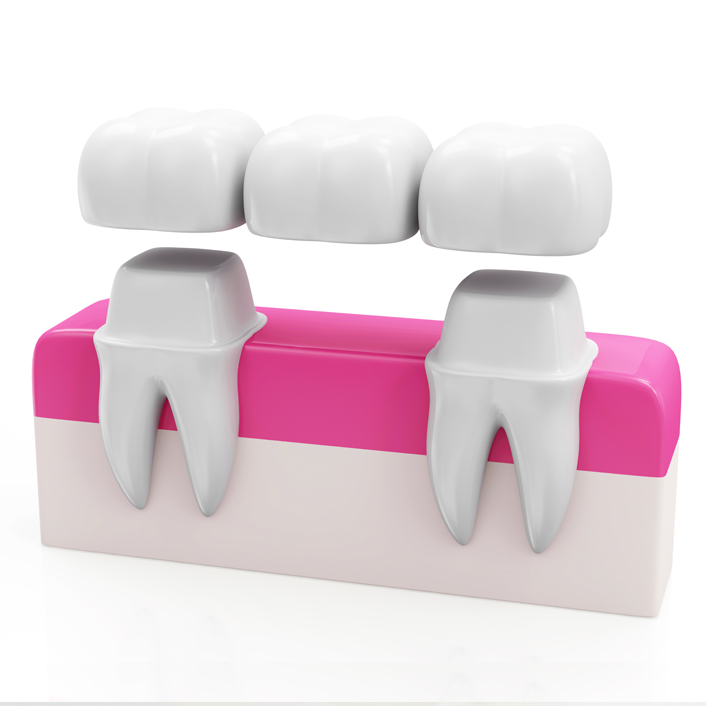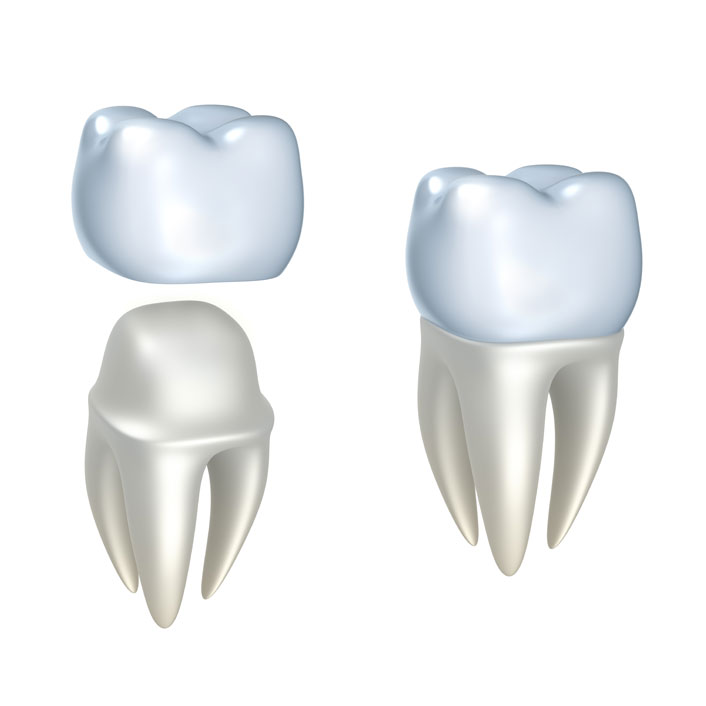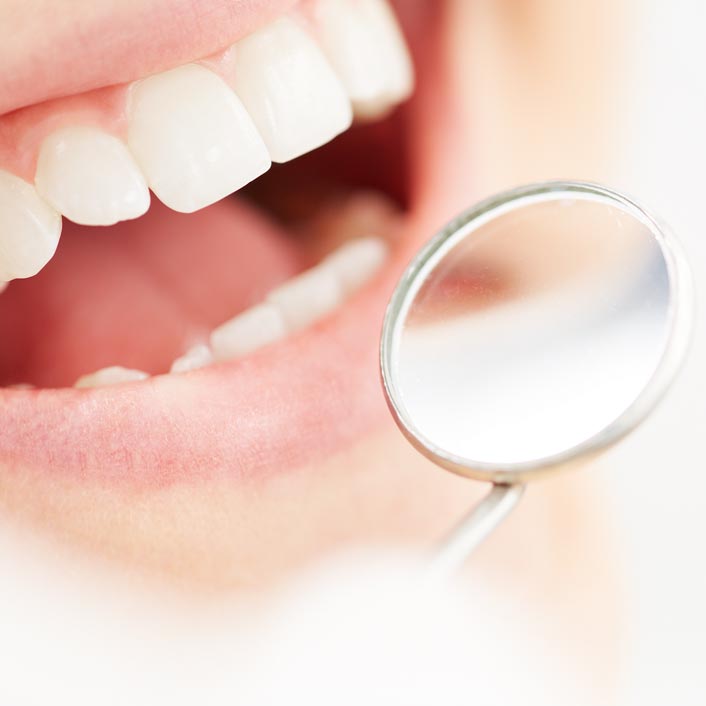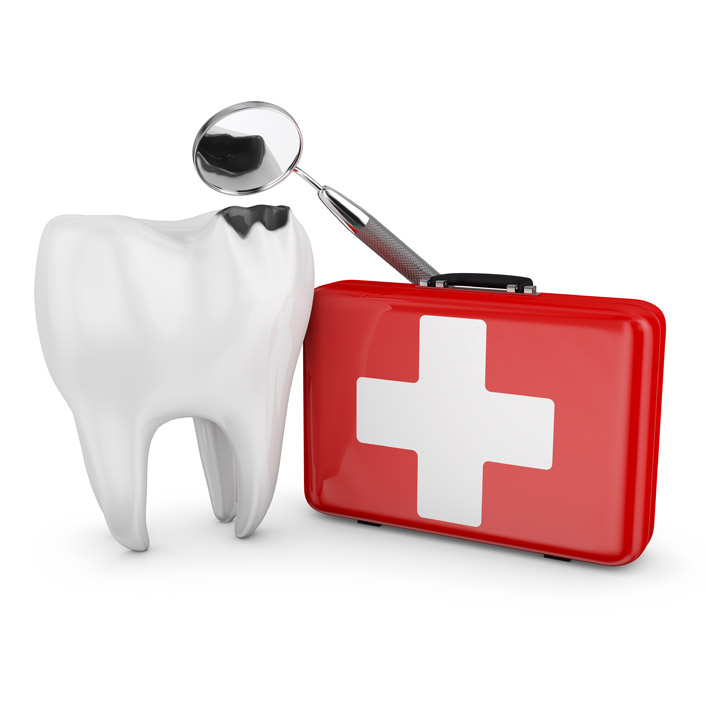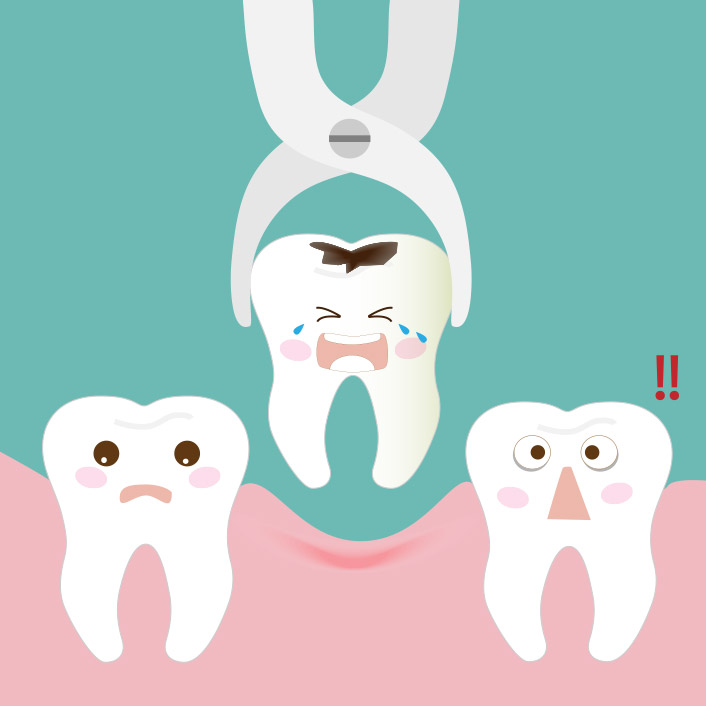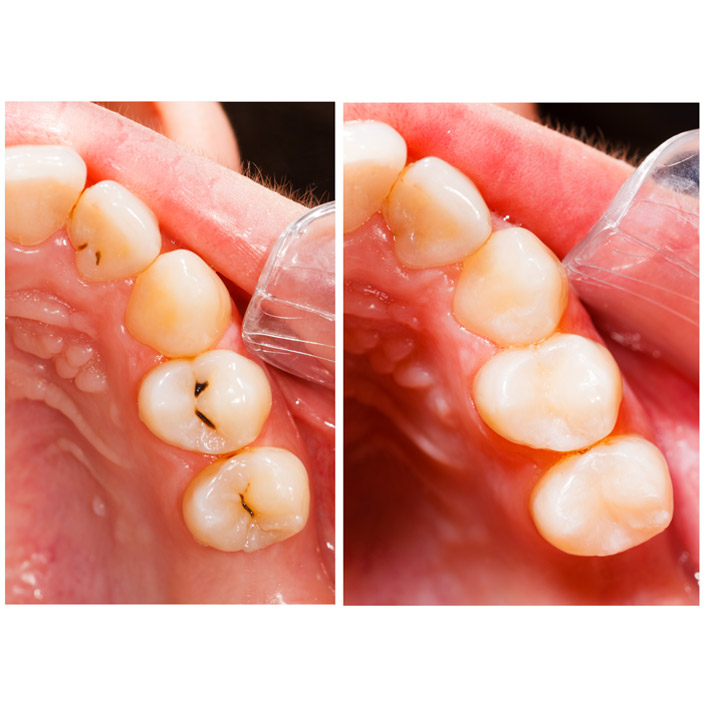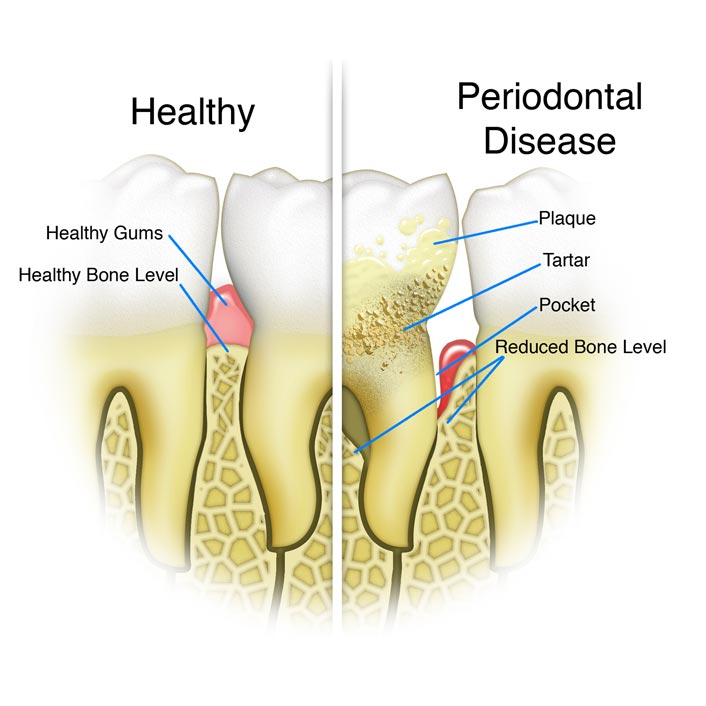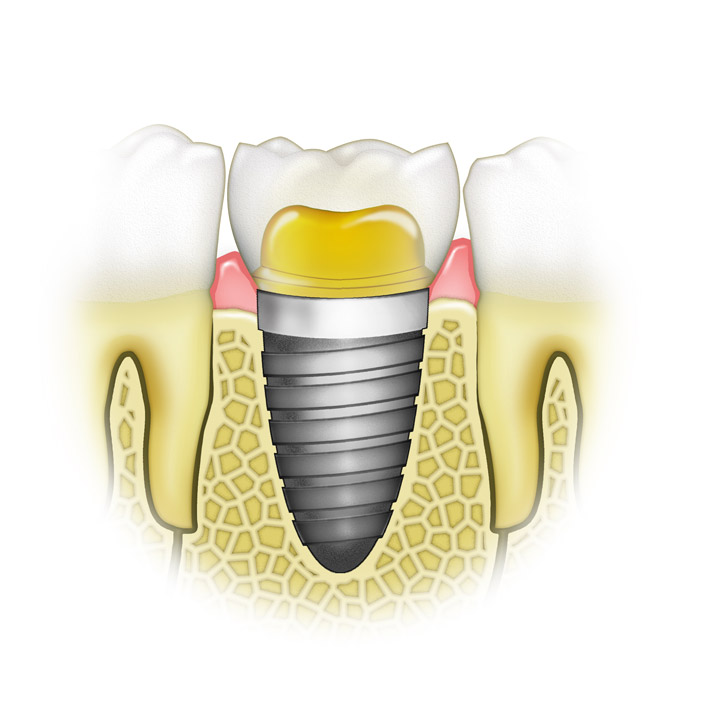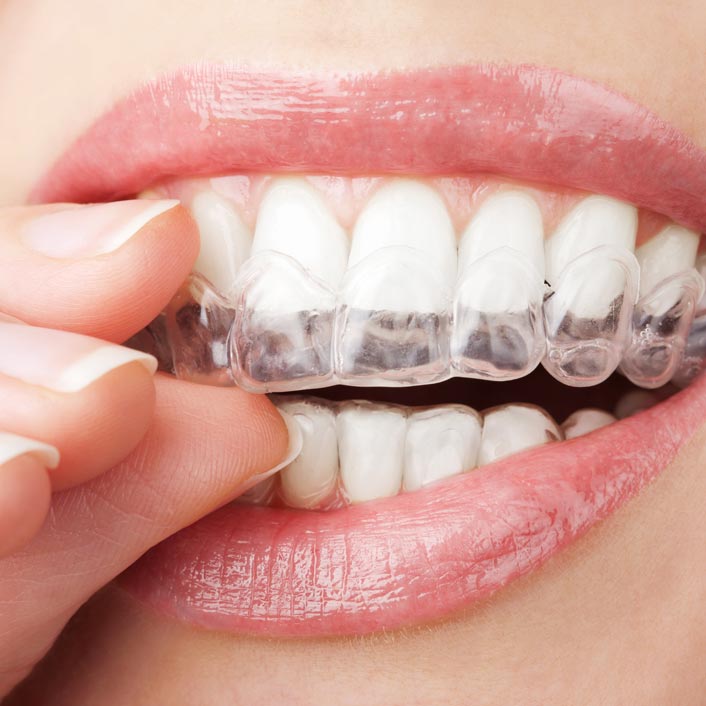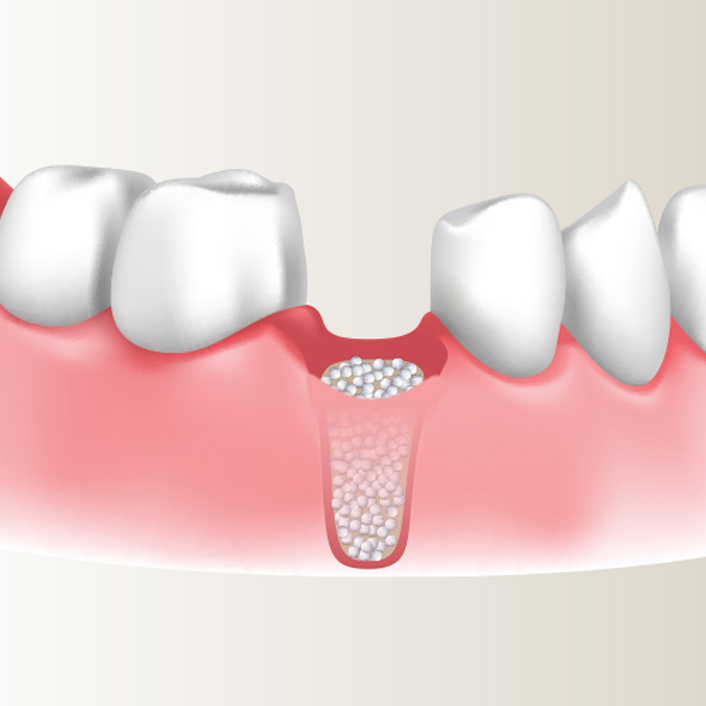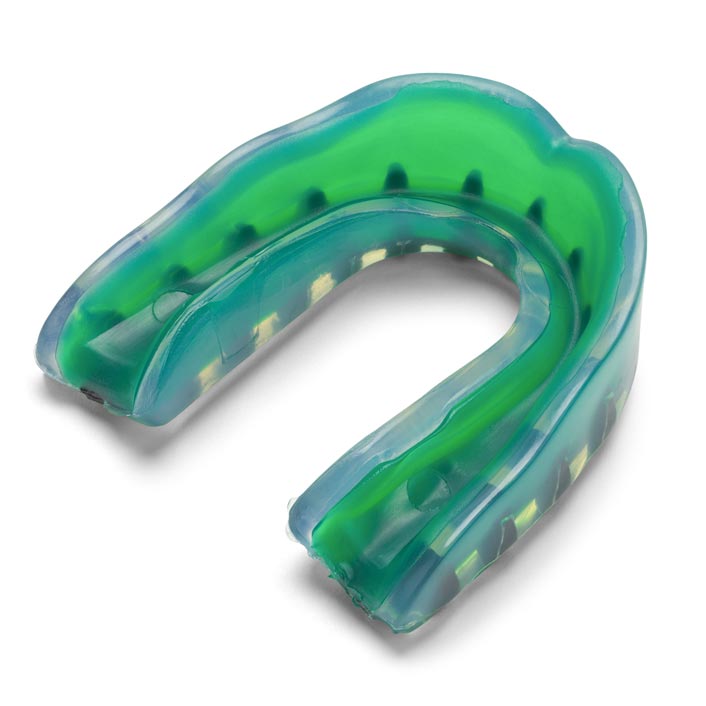Our Services

Nitrous Oxide Sedation
Nitrous oxide sedation, also known as "laughing gas," is commonly used to make treatment more comfortable. The nitrous oxide is inhaled through a mask and produces a state of relaxation. Local anesthetic will be administered in conjunction with nitrous oxide to eliminate pain. Nitrous oxide is designed to make procedures easier for nervous patients and has been effective for many years.

Bridge
A bridge is an ideal method to fill the space created by missing teeth. A bridge is one or more artificial teeth that are cemented into place using the real teeth on either side for support--hence the name. Bridges are a perfect option for filling the space created by a missing tooth. A bridge replaces the missing tooth both functionally and cosmetically. Bridge work is as much an art as it is an exact science. Bridge materials include gold alloys, porcelain bonded to metal alloy, or all-ceramic material made to match your natural tooth color. The choice of material depends on requirements for strength, wear, and/or aesthetics.

Cosmetic Dentistry
Cosmetic dentistry combines different treatment methods to make our teeth look beautiful. A beautiful, bright smile is the sign of well-being, it gives us good self-esteem and self-confidence every day and white, healthy, properly aligned teeth are a big advantage in today's private and professional life. Is this possible? Yes, thanks to advanced dental materials a beautiful smile is within our reach. A nice and healthy smile can be achieved thanks to patient's cooperation, the commitment of the hygienist and the experience of the doctor specializing in cosmetic dentistry.
Professional teeth cleaning procedure
- This procedure is performed in our clinic by a certified dental hygienist. As we attach great importance to this procedure, it consists of several stages:
- the removal of tartar with an ultrasonic scaler (called scaling),
- sandblasting, i.e. the removal of sediment and superficial staining with dental sand blaster,
- tooth polishing
- oral hygiene instruction - performed by dental hygienists
Professional teeth cleaning performed regularly every 6 months helps to keep the gums in a good condition, clean hard to reach places and remove stains. As a result, the teeth are significantly whiter after the procedure. If there are no other contraindications, it is the best time to perform the teeth whitening treatment.
Teeth whitening
It is a common procedure in cosmetic dentistry, and a number of different techniques are used by dental professionals. Many different products are also marketed for home use. Techniques include bleaching strips, bleaching pen, bleaching gel, and laser tooth whitening. Bleaching methods generally use carbamide peroxide or hydrogen peroxide. There are claims that carbamide peroxide is less effective than hydrogen peroxide, but also has fewer side effects. Common side effects of bleaching are increased sensitivity of the teeth and irritation of the gums.
In office whitening: before the treatment, the dentist may examine the patient: taking a health and dental history (including allergies and sensitivities), observe hard and soft tissues, placement and conditions of restorations, and sometimes x-rays to determine the nature and depth of possible irregularities. The whitening shade guides are used to measure tooth color. These shades determine the effectiveness of the whitening procedure, which may vary from two to seven shades. The effects of bleaching can last for several months, but may vary depending on the lifestyle of the patient. The bleaching agent is either carbamide peroxide, which breaks down in the mouth to form hydrogen peroxide, or hydrogen peroxide itself. The bleaching gel typically contains between 10% and 44% carbamide peroxide, which is roughly equivalent to a 3% to 16% hydrogen peroxide concentration. Bleaching is least effective when the original tooth color is grayish and may require custom bleaching trays. Bleaching is most effective with yellow discolored teeth. If heavy staining or tetracycline damage is present on a patient's teeth, and whitening is ineffective (tetracycline staining may require prolonged bleaching, as it takes longer for the bleach to reach the dentin layer), there are other methods of masking the stain. Bonding, which also masks tooth stains, is when a thin coating of composite material is applied to the front of a person's teeth and then cured with a blue light. A veneer can also mask tooth discoloration.
At-home whitening methods include gels, chewing gums, rinses, toothpastes, paint-on films, and whitening strips.
Dead teeth whitening.
Dead teeth often get stained and become a major aesthetic problem. Thanks to bleaching formulas we can significantly change the color of the tooth and avoid prosthetic treatment. An example of an effective formula is Opalescence Endo, which is inserted into the tooth and left there protected with a dressing. The entire procedure is repeated two or three times.
Correction of tooth shape with composite material and with restorations
Using the latest technology of nanocomposites, which naturally allow you to rebuild your teeth, preserving their natural structure, we correct the shape of the teeth. Closing diastemata and use of composite veneers are treatments that can change our smile.

Crowns
Crowns are used to restore and enhance teeth that are damaged, or to replace missing teeth. A crown, also called a cap, is used to entirely cover a damaged tooth. A crown not only strengthens the tooth, but it can also dramatically improve the tooth's appearance, shape and alignment.
Crowns may be used to…
- Replace a large filling when there is little tooth structure remaining
- Protect a weak tooth from fracturing
- Restore a fractured tooth
- Attach a bridge
- Cover a dental implant
- Cover a discolored or poorly-shaped tooth
- Cover a tooth that has had root canal treatment

Dental Cleaning
A dental cleaning is a professional cleaning you receive from a dentist or dental hygienist. Most dental cleanings take only 25 to 30 minutes. Cleanings should be performed every six months to prevent excessive plaque buildup. Plaque left untreated can lead to unhealthy gums and tooth decay. A routine dental cleaning should include scaling, root planing and polishing.
Scaling and root planing is the process of removing plaque and tartar from all tooth surfaces with a variety of methods, depending on the amount of plaque and tartar. Dental hygienists traditionally perform scaling by hand. However, new and advanced technology has led to more modern methods such as electric scalers. This sophisticated tool allows dental cleanings to be performed more efficiently and in less time. Both electric and manual scaling methods can be combined to achieve the best results. Polishing completes the cleaning, making the surface of the teeth smooth and minimizing future plaque build-up.
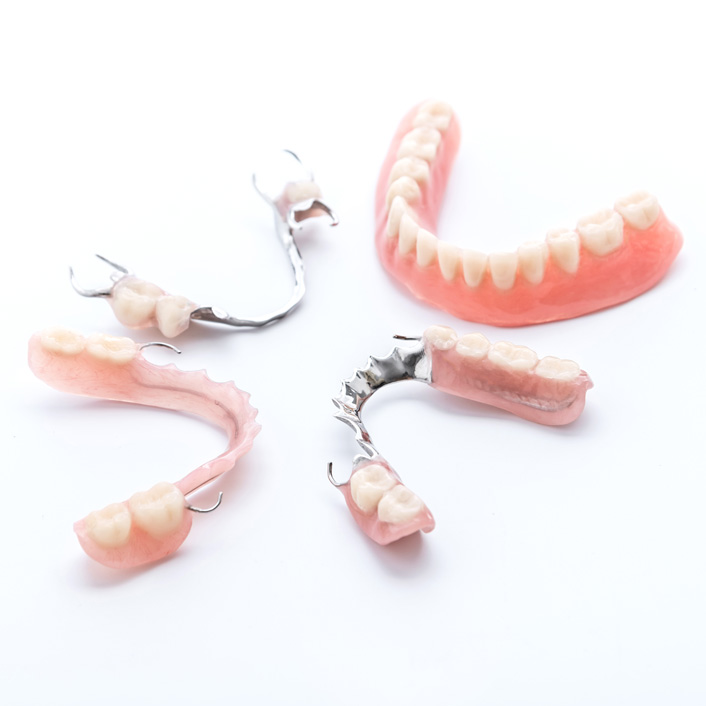
Denture
Partial denture/full denture: A denture is a removable replacement for missing teeth and surrounding tissues. There are two types of dentures available: partial dentures and complete dentures. Partial dentures are used when some natural teeth remain and complete dentures are used to replace all teeth. Dentures are made to resemble your natural teeth, so there should be no noticeable change to appearance. In fact, dentures may even improve a smile!
Complete Dentures – This restoration method is used to restore smile and mouth function if all teeth have been lost. The dentures are custom created and natural looking. They are fit in the patient's mouth to take the place of the original teeth. Complete dentures are generally removable and may require adjustments in order to create a proper fit with the gums and mouth.
Partial Dentures – A removable partial denture is used when one or more natural teeth still remain in the upper or lower jaw. Made of replacement teeth attached to a pink or gum-colored plastic base, partials help restore better functionality to the mouth. As with complete dentures, it is possible to have more permanent option cemented into place.
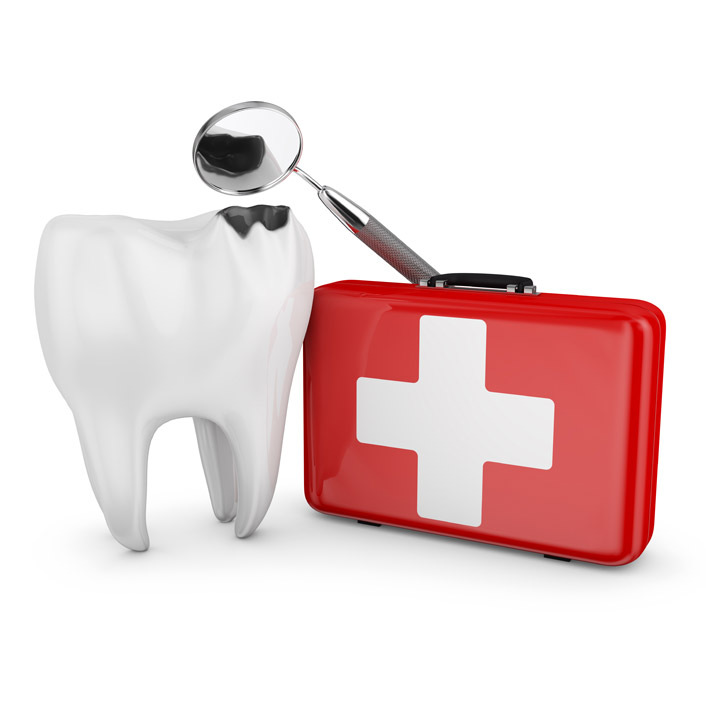
Emergency Exam
Sever pain or discomfort in the jaw, gums or teeth can often become unbearable. At Gentle Family Dentistry we offer same-day emergency dental services and appointments to provide immediate relief and long term dental solutions! If you are suffering from severe pain or discomfort don't hesitate to call us at (603) 926-4575!
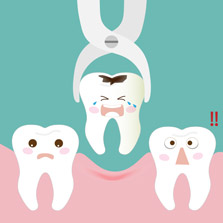
Extractions
A tooth may need to be extracted if the following occurs:
- Severe decay
- Advanced gum disease
- Infection or abscess
- Orthodontic correction
- Malpositioned teeth
- Fractured teeth or roots
- Impacted teeth
The dentist may suggest an extraction after careful examination and treatment. X-rays are used to understand the shape and position of the tooth and surrounding bone before extracting the tooth. Based on the degree of difficulty, a dentist may refer you to an oral surgeon. A certain amount of pain and discomfort is to be expected following an extraction, but it can be minimized with painkillers and ice packs applied to the face for 15 minutes at a time. Discomfort should lessen within three days to two weeks. If you experience prolonged or severe pain, swelling, bleeding or fever, call our office immediately.

Fillings
A filling is a way to restore a tooth decayed tooth back to its normal shape and function. If you have a tooth that requires a filling, the dentist will first remove the decayed tooth material, then clean the affected area and fill the cleaned-out cavity with a filling material. This filling will help prevent further decay by closing off any cracks or spaces where bacteria might enter. There are a variety of filling materials available including gold, silver, plastic and porcelain. We will work with you to determine which material is best for you, depending on the extent of repair, the location of the filling and the cost. Each of the filling materials is briefly explained below:
Amalgam (silver) fillings are a more inexpensive choice and are also well-tolerated. However, due to their dark color, they are more noticeable than porcelain or composite restorations and are not recommended for fillings in very visible areas such as front teeth.
Composite (plastic) resin fillings are custom-made to the exact color of the patient’s teeth, creating a more natural appearance. While these white fillings may be less noticeable than other materials, they usually only last between 3 and 10 years. They may not be ideal for larger fillings as they may chip or wear over time. They can also become stained from coffee, tea or tobacco.

Gum Disease Treatment
It’s estimated that more than half of U.S. adults have gingivitis. Gingivitis, in some cases, can lead to periodontitis (gum disease) and host of other health problems.
Gum disease can cause bleeding, swelling, bad breath, pain, receding gums and tooth loss. But it doesn’t always stop there. You oral health is the beginning point for your whole body’s health and wellness. It is imperative that we stop problems before they even start!
Gum disease causes a buildup of bacteria in deep pockets between the teeth and gums. That bacteria can transfer to your bloodstream when gums bleed, putting you at a much higher risk to develop the following health problems:
- Stroke
- Respiratory Disease
- Heart Disease
- Diabetes
- Ulcers
- Osteoporosis
- Arthritis
- Pre-Term Births
Periodontal treatment typically involves containing the infection through deep cleaning like scaling and root planing, clearing buildup at the root of the teeth. The dentist may also suggest specific toothpastes and mouth rinses. We may also prescribe antibiotics to fight infections. Surgery is required for the most severe cases.
We examine you for gum health at every 6-month check-up. If you have been experiencing any symptoms like bad breath, bleeding or tender gums, please let us know. We will decide what is the best form of treatment to restore your gums to optimum health.

Implant Placement
A dental implant is an ideal tooth restoration for people who are missing one or more teeth for reasons like injury or periodontal disease. To begin the implant process, a metal post is surgically positioned into the jaw. This post will act as a permanent "root" for the implanted tooth. Once it is in place, the surrounding bone and tissue needs time to heal.
Implant placement requires special training, as it is a surgical procedure. Our team is highly-trained in implant placement to meet your dental needs. Implants require healthy gums and adequate bone. A patient must also be committed to excellent oral hygiene and regular dental visits, as these are critical to the long-term success of dental implants. Please set up a consultation for this comprehensive procedure.
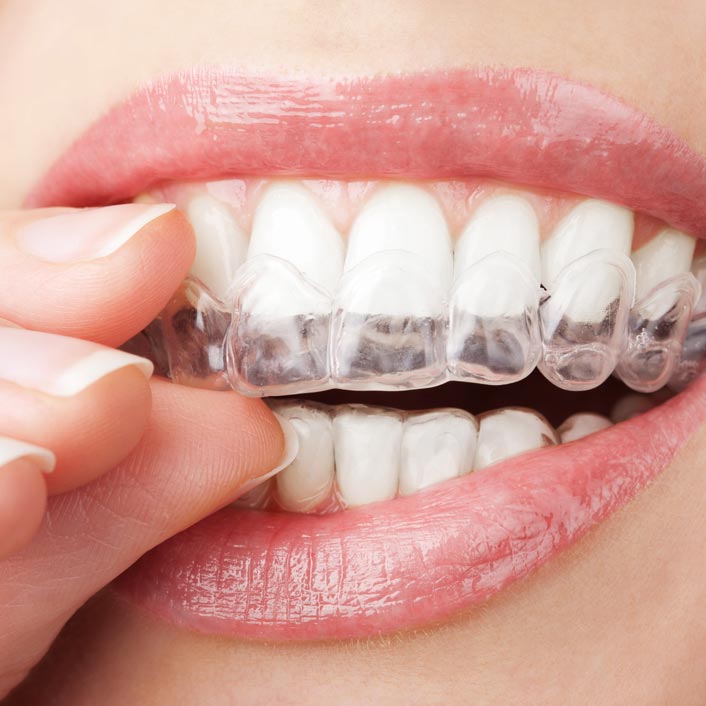
Invisalign
Invisalign is an attractive alternative to traditional metal braces. It is a series of clear, custom-fit removable mouth trays that apply a controlled amount of force to your teeth to slowly straighten them. The system provides the same beautiful results as traditional braces, but they are virtually invisible. Because Invisalign trays are removable, they can be taken out while eating, drinking, brushing and flossing. The Invisalign system begins in the dentist or orthodontist's office with taking molds to design a your trays. Patients switch trays every two weeks to gradually shift the teeth. The system requires a visit to the office every six weeks so that treatment can be monitored. Once treatment is complete, a patient will likely be given a retainer to maintain the smile. The cost of Invisalign varies according to the complexity of the case. Insurance policies generally cover Invisalign to the same extent that they cover traditional braces. Contact us for an Invisalign consultation
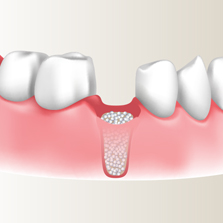
Bone Grafting
Implants are one of the best tooth replacements available. However, proper bone support is needed to retain the implant and to obtain a good prognosis. Bone grafting can be done after a tooth has been extracted to prevent collapsing of the bone. It is also used to push up the sinus in order to create enough solid bone to place an implant.
These are usually surgical procedures that are covered with antibiotics and pain meds.
Ask us if bone grafting can be done for you to prepare your space for an implant!

Gum Grafting
Gum recession is the process in which the tissue that surrounds the teeth pulls away from a tooth, exposing more of the tooth's root. Gum recession is a common dental problem; it affects 4% to 12% of adults and often goes unnoticed until it becomes more severe.
Many people don't even notice that their gums have receded, because it is a gradual process. However, over time, an exposed tooth root can not only look ugly, but can cause tooth sensitivity, especially when eating cold or hot foods. Eventually, gum recession, if not treated, can cause tooth loss. To repair the damage and prevent further dental problems, a gum tissue graft may be needed.
Many times gum tissues need to be thickened and strengthened before an implant can be placed. Thickening the gum tissue prevents future recession around the implant and can sometimes create a more aesthetic appeal for the implant.
Your dental team at Gentle Family Dentistry will ensure that all the proper procedures have been done prior to implant placement to ensure that your implant is a success.
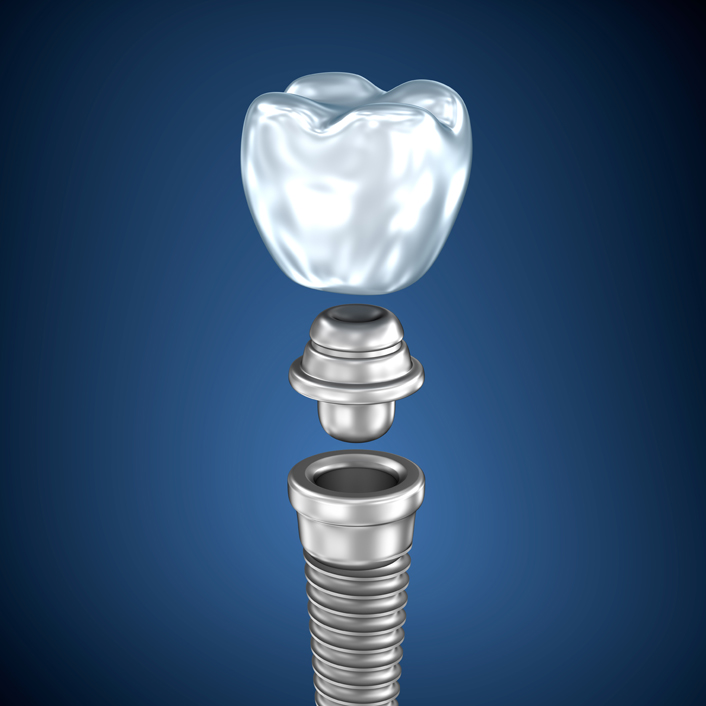
Implant Crowns
An implant crown is similar to a crown on a natural tooth. →
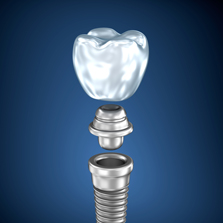
Implant Crowns
An implant crown is similar to a crown on a natural tooth. It is made from the same material, but is fabricated in a specific way to be compatible to your implant.
Having your implant crown placed is the last step in the implant process. Gentle Family Dentistry ensures that all your implant procedures are done in our office from start to finish by highly trained dentists.
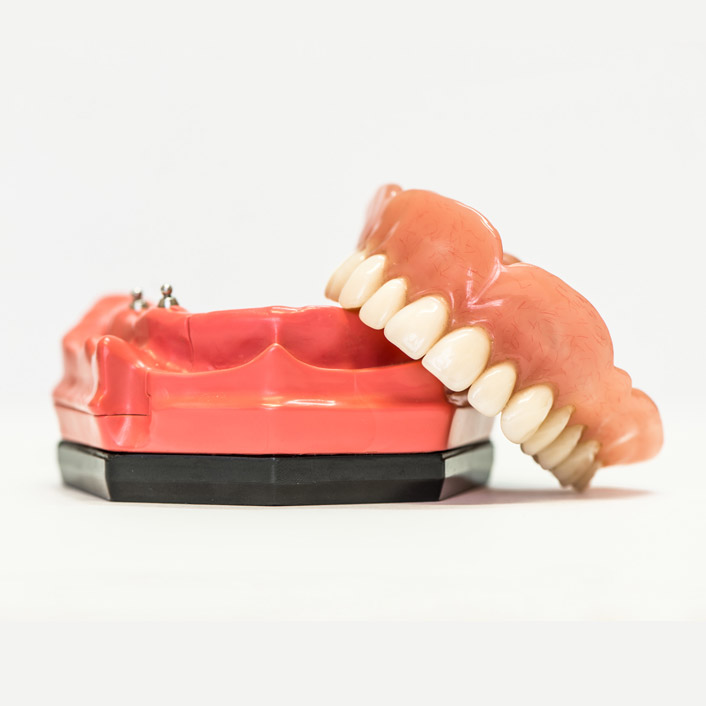
Implant Supported Dentures
An implant supported denture is not supported by your gums, but rather by implants. →

Implant Supported Dentures
Tired of your lower denture “floating” in your mouth? Want to eat an apple without being embarrassed of your dentures? You are not alone!
50% of Americans over the age of 50 wear partial or full dentures and many are dissatisfied with the fit of their lower denture.
An implant supported denture is not supported by your gums, but rather by implants. The connection of the implants to the denture makes it more retentive and stable.
Ask Gentle Family Dentistry how we can improve the fit of your dentures and feel the freedom to eat anything you want again.

Mouth Guards
Custom-designed mouth guards are made of flexible plastic and molded to fit the shape of your teeth. Mouth guards are recommended to protect the jaw, tongue, cheek lining and teeth during physical activity and sports such as boxing, football, basketball, or other activities where your mouth might get hit. Guards generally last 3-10 years.
Custom-made oral appliances can also be used as part of treatment for conditions like sleep apnea and TMJ disorders. In general, plastic appliances can be used to correct a variety of problems.
If you are active in athletics or experiencing any concerning experiences with your mouth, teeth, or jaw, please let us know. If any kind of guard or appliance is a good option for you, we will take an impression of your teeth to create a custom-fit product for your specific needs.
Night Guards
Many adults are affected by bruxism, more commonly known as teeth grinding or clenching, individuals may be affected by a variety of symptoms including worn tooth enamel, recessed gums, increased tooth sensitivity, jaw pain, earaches and headaches.
If you have any of these symptoms, your dentist can fabricate a hard, custom made appliance for you to wear at night.
There are many benefits to a night guard including reducing headaches, improving posture and breathing, reducing stress and tension, and avoiding future wear fracture of your teeth.
Ask us if a night guard will alleviate your symptoms and improve your quality of life.
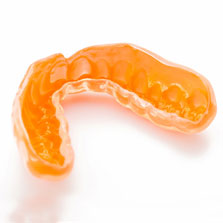
Night Guards
Many adults are affected by bruxism, more commonly known as teeth grinding or clenching, individuals may be affected by a variety of symptoms including worn tooth enamel, recessed gums, increased tooth sensitivity, jaw pain, earaches and headaches.
If you have any of these symptoms, your dentist can fabricate a hard, custom made appliance for you to wear at night.
There are many benefits to a night guard including reducing headaches, improving posture and breathing, reducing stress and tension, and avoiding future wear fracture of your teeth.
Ask us if a night guard will alleviate your symptoms and improve your quality of life.
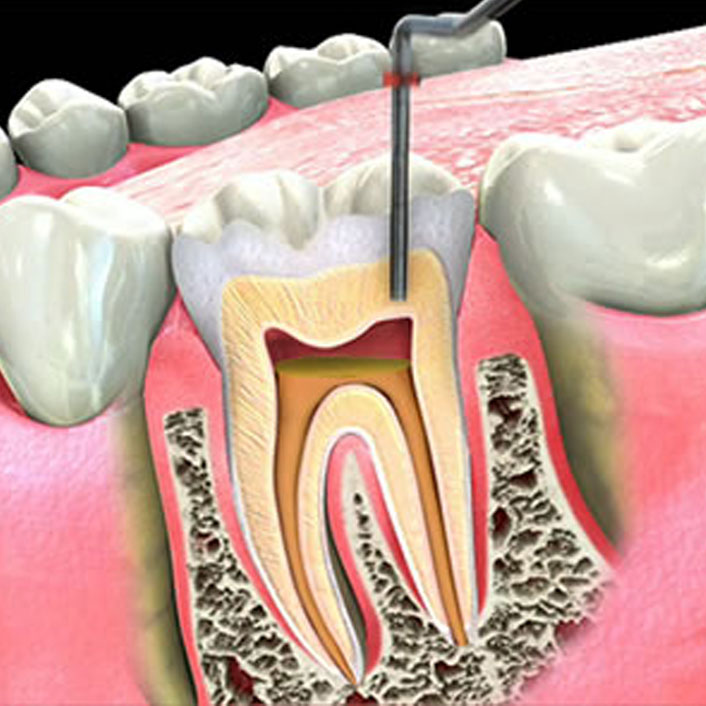
Root Canal
Root canal treatment, also referred to as root canal therapy or endodontic therapy, is used to save an infected or damaged tooth and avoid having to remove it. A root canal becomes necessary when a neglected cavity reaches all the way to the pulp at the center of the tooth, causing the pulp to become infected. Regular cleanings and checkups detect and prevent problems early on.
Trauma can also cause deep damage to the nerve of a tooth. Once this occurs, the pulp becomes infected, and it begins to eat away at the surrounding bone (this is called an abscess). By the time the pulp is infected it must be treated, and cannot heal on its own. It can even weaken the entire immune system, making it very dangerous and painful.
Symptoms of infected pulp may include sensitivity to hot/cold or sweets, pain, swelling, pain with biting or pressure, and a bad taste in the mouth. Sometimes, however, there are no symptoms, and you are unaware of any problem until a checkup.
A root canal is performed to clean out the infected tooth pulp and disinfect the canals of the tooth. The only other treatment would be to extract the tooth. Once the infection is resolved, the canal(s) is filled to prevent any further infection. Crowns are usually recommended to cover and restore a tooth after root canal therapy.

Sealants
Sealants are a common preventive treatment in dentistry. Some teeth have fine grooves or pits that accumulate plaque, not because the person doesn't brush, but because the grooves are too narrow to allow even one bristle into them. When plaque accumulates, it can lead to cavities and other types of tooth decay. To apply sealants, a plastic material is brushed onto the tooth, filling these narrow grooves and preventing the cavity-causing buildup. Sealants make healthy teeth possible.

Pediatric Dentistry
When it’s time for your son or daughters first dental appointment, our dental team has two important goals to achieve. First, we want to do everything we can to create a fun, enjoyable atmosphere, and second, we want to learn about their unique needs so dental care with us is as personalized as possible. Depending on the child’s age, we will perform a dental cleaning, evaluation, and x-rays. Then, we’ll share the results with you, discussing any developmental concerns or damage we see. We’re always happy to answer questions and concerns about specific treatments.
Just like with adults, we’d like to see your little one every six months for preventive care. Being able to locate and treat dental problems at the earliest possible stages protects children’s smiles and saves them from discomfort. These regular appointments also allow our staff to teach your child about effective brushing and flossing. Maintaining great oral health is not only good for the mouth, but good for the body as well!

Veneers
Veneers are a cosmetic dental procedure in which a thin layer of porcelain or composite material is placed over the outside of the tooth. They are used to improve aesthetics or help with tooth damage. Veneers are usually only performed on the front part of the teeth that are visible when talking or smiling. The procedure can be direct or indirect.
The direct technique usually involves placing composite resin on the outside of the tooth using bonding. Because of that, the direct technique is usually referred to as bonding. The indirect technique usually involves two appointments because the veneers are fabricated at a dental laboratory. At the first appointment the teeth are prepared, impressions are taken, and the teeth are given a temporary covering. The veneers are back from the laboratory after two or three weeks. The temporaries are removed, and the veneers are bonded to the teeth. The laboratory-fabricated veneers are usually made using porcelain or pressed ceramic, and are aesthetically pleasing.
The advantage of veneers versus crowns is that much less of the tooth material has to be removed, and the procedure is generally less uncomfortable. Veneers are not recommended for patients who have large fillings or little tooth structure. They are also typically recommended for the restoration of front teeth.
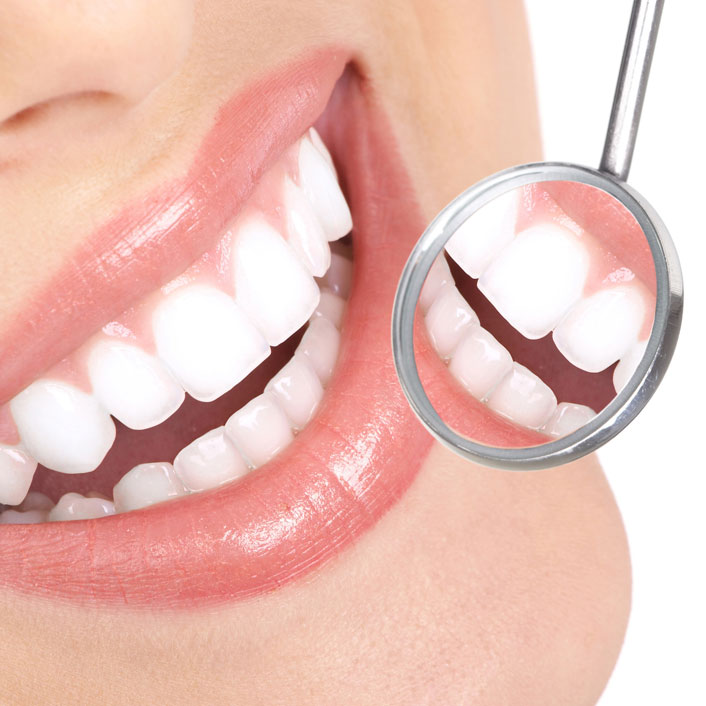
Teeth Whitening
Teeth whitening is a popular procedure to make your teeth whiter and brighter, and therefore more attractive. Bleaching can be used to whiten stained and discolored teeth, or simply to enhance a dull smile. Either way, teeth whitening is a safe and relatively painless procedure for most patients. Whitening comes in strips, trays, or in-office procedures. We offer a wide variety of options for you at our practice.
In-office bleaching procedures are ideal if you want immediate results. The whole process takes about an hour, taking little time out of busy lives. A protective gel is applied to your gums to protect the soft tissue. Then a special light-activated gel is applied to your teeth and light or laser is used to enhance the action of the agent. Finally, the patient receives a take-home gel and instructions to keep the smile bright. The result is dramatically whiter teeth that will last for years.
Tray whitening is a less-expensive and convenient at-home whitening treatment. The results are more gradual. An impression is taken at the dentist’s office in order to create a customized clear tray. Trays are generally ready within a few days, depending, and the patient must follow instructions for how to apply the gel in the trays and how often to use it. Maximum whitening results and a dazzling smile are achieved at the end of the set treatment period. An occasional treatment can be used to maintain the new smile.
Whitening strips can be available at the local store or at dental practices. The dentist will have the best recommendations for your needs.
Ask about our whitening options! Please consult us about use of over-the-counter whitening treatments.
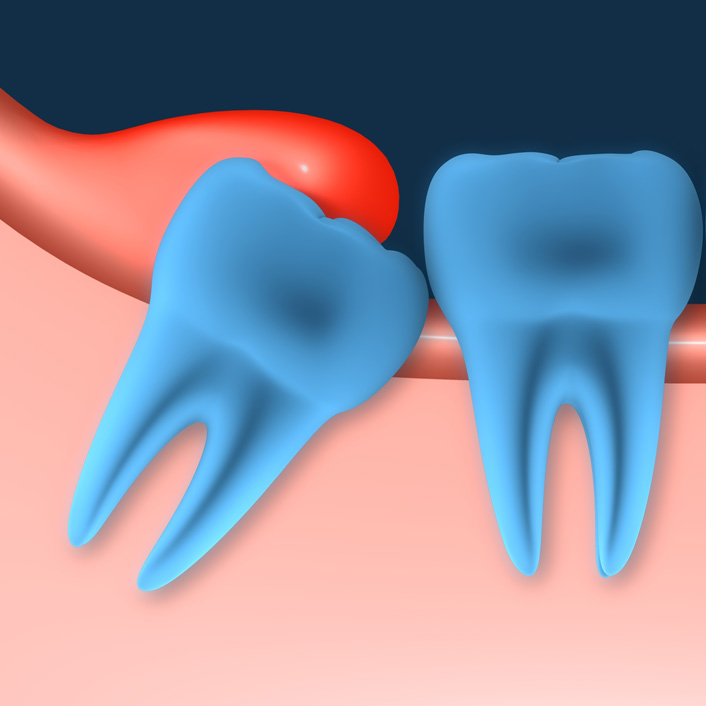
Wisdom Extraction
Wisdom teeth are the last molars, or "third molars" that develop on each side of the jaw. They usually emerge in the back of the mouth between the ages of 16-20.
Wisdom teeth are a valuable asset to the mouth when they are healthy and properly positioned. Often, however, they cause problems and require removal. When the jaw isn't large enough to accommodate wisdom teeth, they can become impacted. Impacted wisdom teeth may grow sideways, emerge only part way through the gum or remain trapped beneath the gum and bone.
A wisdom tooth extraction is a relatively routine procedure. After the tooth (or teeth) is removed, the patient is given gauze and bites down softly for a recommended amount of time to limit any bleeding. Some pain and swelling may occur, but it will usually go away after a few days.
Please call our office if, after following post-op instructions, you have prolonged or severe pain, swelling, bleeding or fever.
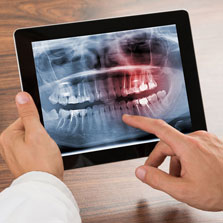
Digital X-rays
While we can view many aspects of your oral health with a visual examination, there are some structures inaccessible to the naked eye. That’s why x-rays are crucial to diagnosis and treatment. The x-rays we capture are instantly visible on a nearby monitor, and they can be magnified, color-coded and transferred digitally for patient convenience. They’re also safer for the environment and you with radiation exposure reduced by up to 90%.
